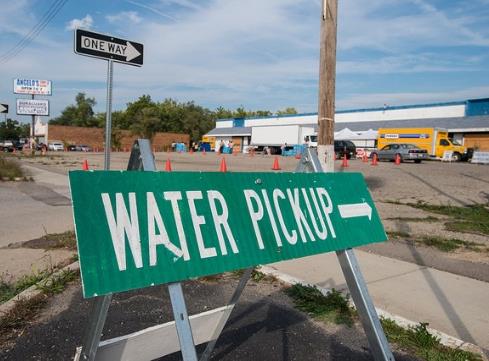At a glance
To assess concerns related to the Flint water crisis, a CASPER took place in May 2016. Data from the CASPER showed the burden of associated behavioral health issues in the community. Federal, state, and local government and community health partners used these results to guide their ongoing recovery efforts through focused behavioral health interventions and communication messages.

Background
On April 25, 2014, the City of Flint, Michigan changed their municipal water supply source from the Detroit-supplied Lake Huron water to the Flint River. The switch caused water distribution pipes to corrode and leach lead and other contaminants into municipal drinking water. In October 2016, Flint residents were advised not to drink the municipal tap water unless it had been filtered through a NSF International approved filter certified to remove lead. Although the city reconnected to the original Detroit water system that same month, the potential damage was already done and a state of emergency was declared on January 16, 2016.
Objectives
In addition to likely health effects from lead exposure, there were concerns about the behavioral health of Flint residents, including feelings of anxiety or depression and substance abuse. To assess these concerns, the Flint Community Resilience Group, the Michigan Department of Health and Human Services, the Genesee County Health Department, the Genesee Health System, the University of Michigan–Flint, and CDC conducted a CASPER in May 2016 to evaluate the following city-wide:
- Behavioral and physical health concerns for adults and children (less than 21 years old) in each household
- Household access to behavioral health services and barriers to access
- Resources used for water-related needs and barriers to access
- How community members were getting information about the crisis

Key results
- 66% of households reported one or more adult members experiencing at least one behavioral health issue "more than usual"
- 54% of households reported that at least one child experienced at least one behavioral health issue "more than usual"
- 22.5% of households reporting difficulties getting access to behavioral health services
- 34% of individuals self-reported symptoms of anxiety and 29% self-reported symptoms of depression
- 51% of households felt that the physical health of at least one member had worsened due to Flint water crisis
Outcome
Federal, state, and local government and community health partners used these results to guide their ongoing recovery efforts through focused behavioral health interventions and communication messages. Data from the CASPER supported the need for continued mental health services along with five-year follow-up activities to promote resilience by the Substance Abuse and Mental Health Services Administration (SAMHSA). Specifically, these activities aim to support youth and their families, alleviate the impact of trauma, reduce behavioral health disparities, and increase opportunities and training for Flint's youth through strong community engagement.
